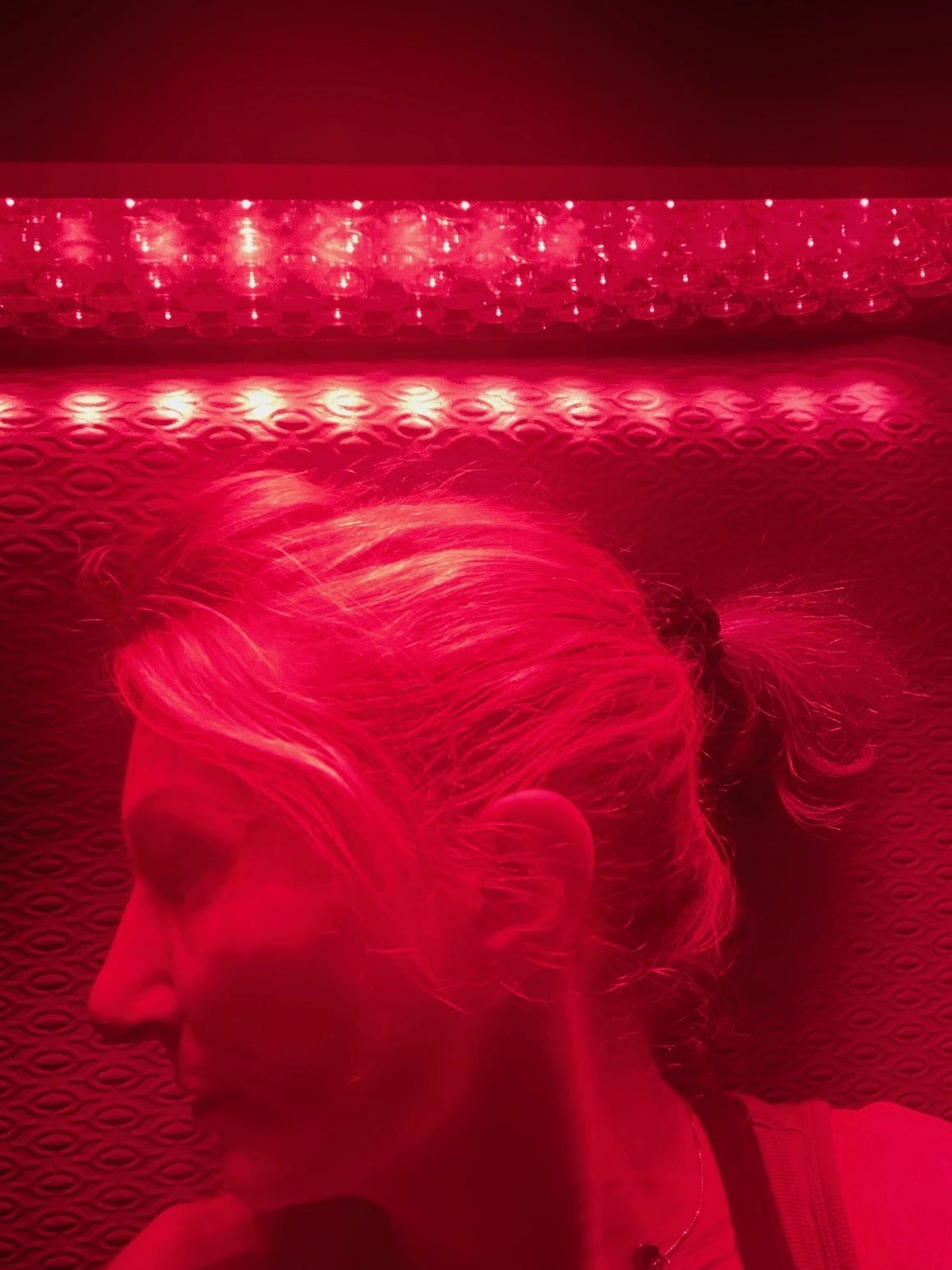In the realm of brain health and Alzheimer's prevention, red light therapy (also called photobiomodulation or “PBM”) is generating quiet but widespread excitement. What was once fringe has become a serious contender in the cognitive longevity space—especially for APOE4 carriers and others seeking non-invasive tools for mitochondrial and neurovascular support.
What Is Red Light Therapy?
Red light therapy uses low-level red and near-infrared (NIR) light to stimulate biological processes at the cellular level. Specifically, it targets the mitochondria, the cell’s energy producers, by activating cytochrome c oxidase—an enzyme that responds to light in specific wavelengths. This leads to:
Increased ATP production (cellular energy)
Reduced oxidative stress
Enhanced neurogenesis and synaptic repair
Modulation of inflammation and microglial activity
Beyond Mitochondria: Light’s Interaction with Intracellular Water
While most explanations of red and near-infrared light therapy focus on mitochondrial stimulation and ATP production, emerging research reveals another powerful mechanism: the interaction of light photons with intracellular water layers (IWL). This structured water within our cells appears to respond directly to R-NIR light, enhancing energy efficiency, promoting cell proliferation, and helping to suppress oxidative stress. This dual action—on mitochondria and intracellular water—may explain why light therapy supports not only energy production but also tissue regeneration and repair. It’s a promising insight that could reshape how we design future cell-based therapies, especially for conditions requiring rapid healing and metabolic support, such as neurodegeneration or end-stage organ disease.
The Wavelengths That Matter
Different wavelengths penetrate to different depths and serve slightly different functions:
Wavelength Color Penetration Function
630–670nm Red Light Superficial collagen, superficial circulation
810–850nm Near-Infrared Deep (2–4 cm) Brain, muscles, deeper tissues
1064nm Near-Infrared Deepest Less heat higher energy penetration
For brain benefits, the sweet spot is 810–850nm, as these wavelengths can reach the cortex, especially when applied to thinner areas of the skull (e.g., forehead, crown, and occipital ridge).
Cognitive Enhancement: What the Science Says
Multiple studies suggest that transcranial near-infrared light therapy (tPBM) may enhance:
Memory, executive function, and attention
A 2017 study (Berman et al.) found improved cognitive performance in patients with traumatic brain injury following NIR therapy.
Cerebral blood flow and brain oxygenation
NIR light promotes vasodilation via nitric oxide release, improving perfusion—critical for aging brains.
Neuroplasticity and neuroprotection
Studies in mice (Chao, 2019) and early human trials show increased BDNF and reduced amyloid pathology.
Sleep and mood
Evening treatments have been shown to improve sleep latency and quality by calming overactive sympathetic drive.
What’s worked for me:
I purchased a relatively inexpensive red light panel from Hooga a few years ago. It has both red light and Near Infrared. Only this year have I started using it more consistently about 5 days a week for 15-20 each as shown here. It’s easy to stick to and I’m usually listening to a podcast or doing hand weight exercise so it’s not idle time.
One thing I noticed, is that it encourages new hair growth. Once I started using it regularly, within a few weeks I saw many 1-2” hairs sticking straight up off my scalp! While it’s very difficult to pinpoint exactly what is delivering real benefits (I’m sure everything in my protocol works synergistically), this is one of the more important tools I believe helps to maintain health, wellness and cognition!
If anyone has been using red light therapy, I’d love to hear your experience!
🔬 Supporting Studies
https://pubmed.ncbi.nlm.nih.gov/35265207/
https://pubmed.ncbi.nlm.nih.gov/40551167/
https://pubmed.ncbi.nlm.nih.gov/40188044/


Hi Karin, I have a small panel red light unit that sits on a stand a bit like a mirror or large photo frame. Assuming it’s the required frequency, do you think I can reap the brain health benefits by simply sitting with my face close to it (goggles on!)? I originally bought it - pre my 4/4 news - to help with a very troubled knee.
Karin - what about the light frequency? I also use a red light panel (Rojo Brand) which has the wavelengths you noted. Mine has adjustable frequency for the light and I sometimes run mine at 40 Hz which is a known frequency used by other neuro-stimulators of various types. Do you run your light continuous or at a particular frequency?